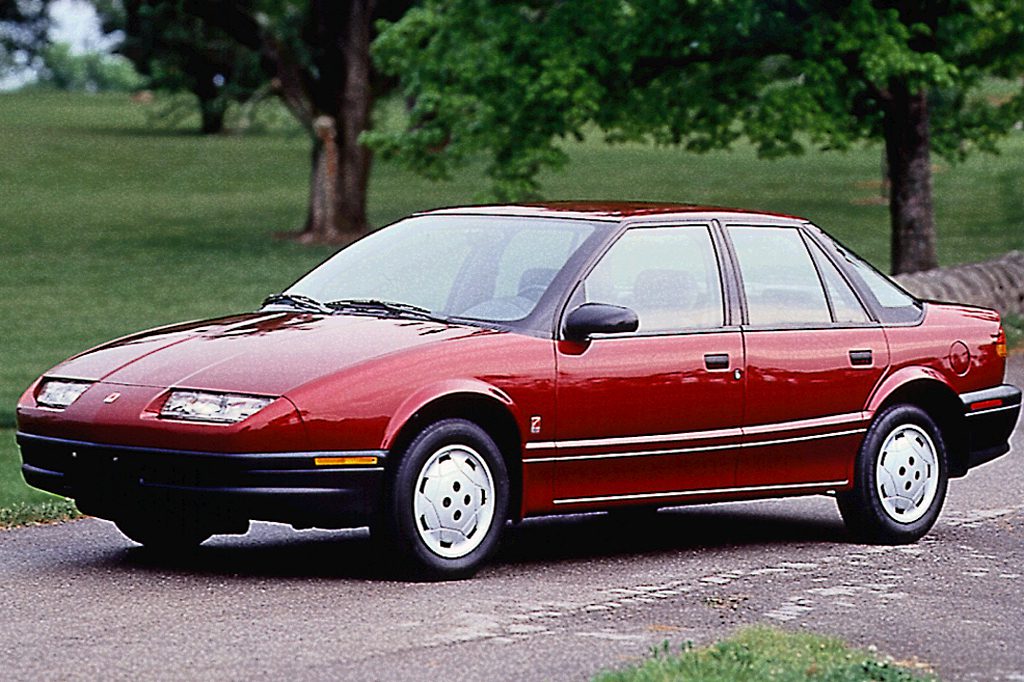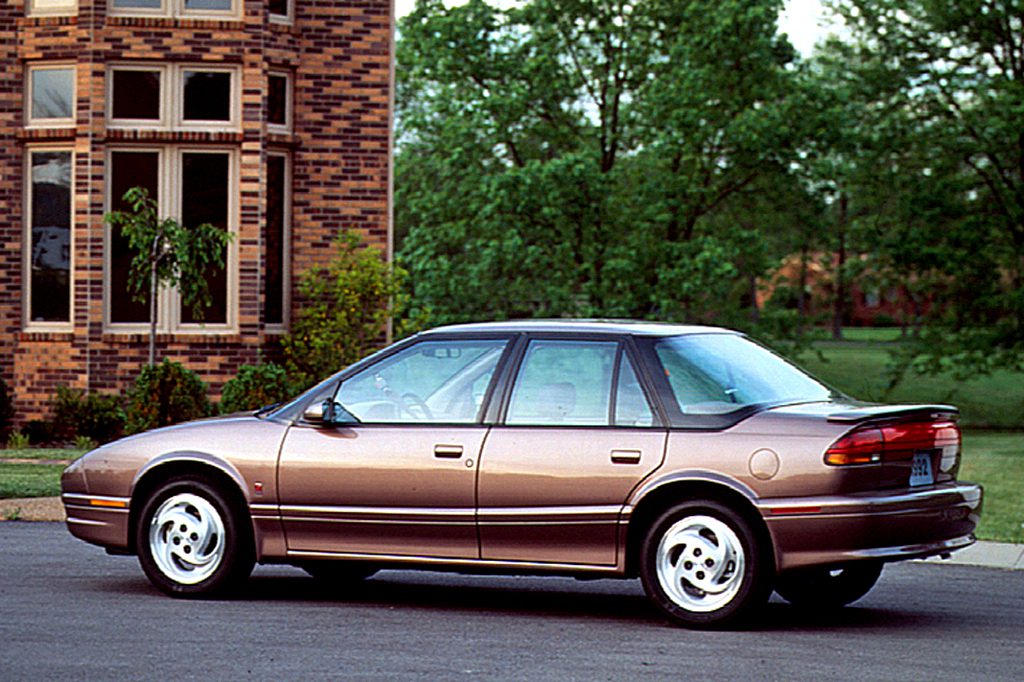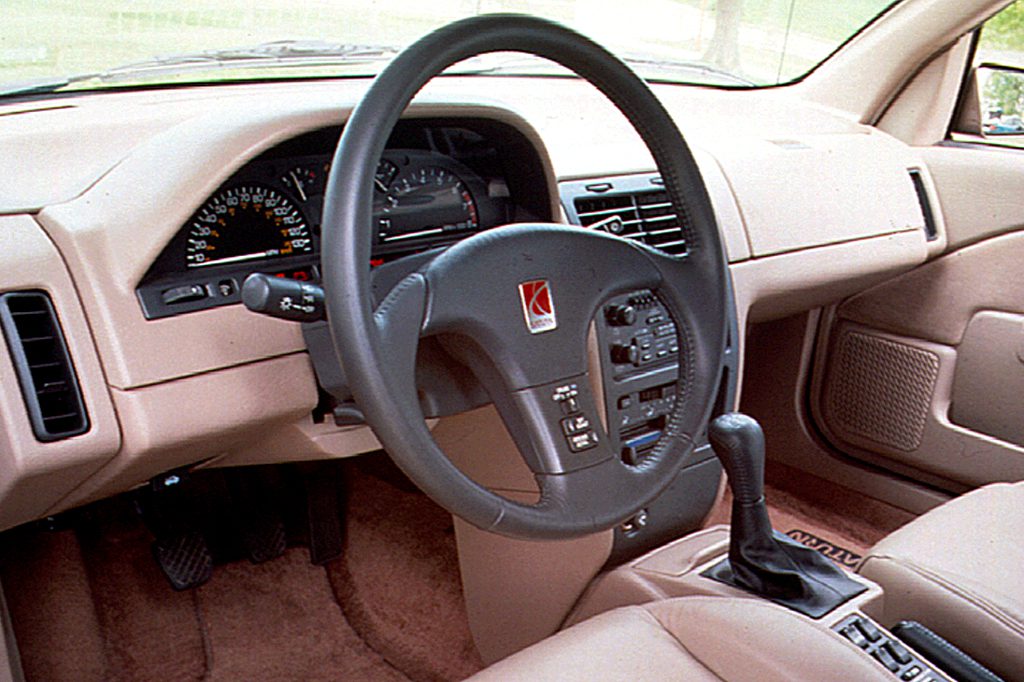| Compact car; Built in USA |
|
|
| Good condition price range: $1,000 – $1,800* |

1995 Saturn SL

1992 Saturn SL2

1994 Saturn SW2

1992 Saturn SL2 interior

1992 Saturn SL2 interior
| Pros: |
|
| Cons: |
|
Saturn sedans aren’t the best choice in a subcompact, but overall they rank only slightly below the class-leading Honda Civic and Toyota Corolla.
Overview
Built on the same platform as the Saturn SC coupes, the front-drive 4-door notchback sedans and 4-door wagons came with side body panels made from a rustproof plastic. However, hoods, trunklids, and roofs were still made of steel. Both models rode on a 102.4-inch wheelbase, three inches longer than the coupe’s. The sedan appeared in 1991 in two levels: SL1 and SL2. The station wagons, SW1 and SW2, joined the lineup early in ’92. The “1s” were powered by a single-overhead-cam 1.9-liter engine that provided 85 horsepower. All “2s” came with a twin-cam version that produced 124 horsepower. A 5-speed manual transmission was standard and a 4-speed automatic optional. Antilock brakes were optional.
Yearly Updates
| 1992 Sedan/Wagon A new base model, the SL, is added to the lineup to provide buyers a choice of three trim levels of Saturn sedans. |
| 1993 Sedan/Wagon Two wagon models join the Saturn lineup for ’93, riding the same 102.4-inch wheelbase as the sedans. The new SW1 and SW2 wagons have similar equipment to the SL1 and SL2 sedans. Like the sedans and coupes, the new wagons arrive with a standard driver-side airbag and optional antilock brakes. The SL2 and SW2 share a new front fascia with a wider grille opening. Also, traction control is a new option for models equipped with the automatic transmission and ABS. |
| 1994 Sedan/Wagon Revised power door locks, a recalibrated transmission, and CFC-free air conditioning sum up the changes to Saturn’s sedans and wagons for ’94. |
| 1995 Sedan/Wagon A standard passenger-side airbag and extra power for the base engine make headlines for ’95, the last year for the current design of the Saturn sedans and wagons. The base engine provides 15 more horsepower–100 instead of 85. With the addition of dual airbags, motorized shoulder belts have been discarded for new height-adjustable manual 3-point belts. |
